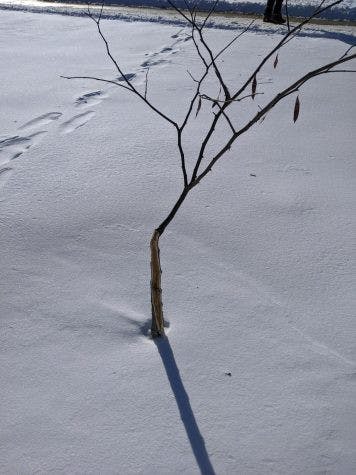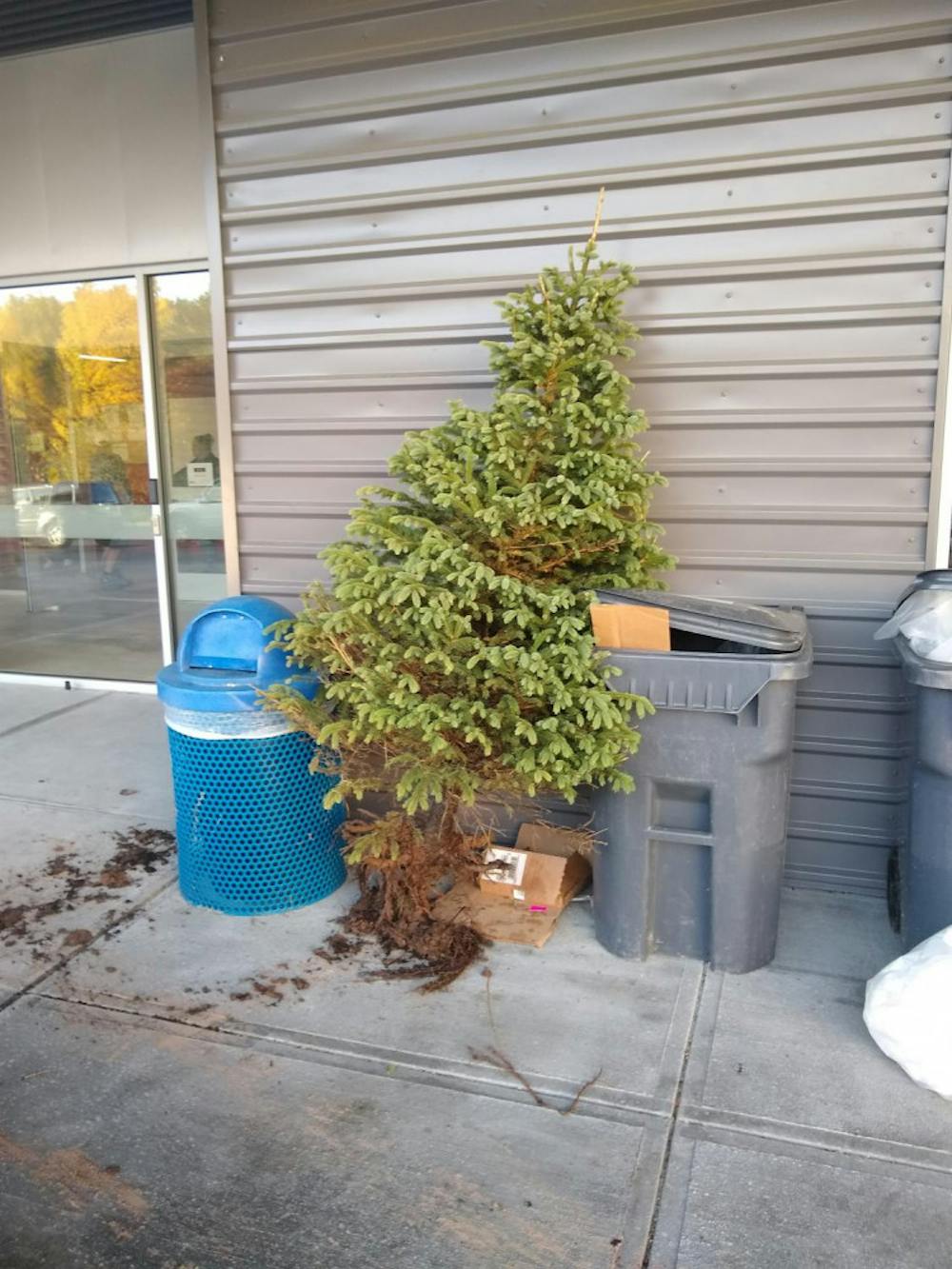Tim Parsons, the college’s horticulturist, wants you to imagine a campus without any trees: no shade in the summer, nothing to block the wind and snow in winter, no brilliant color change in the fall. While this grim future is not a real risk, the college has already seen $2,000 worth of damages to campus trees this fall.
Tree vandalism on campus, a costly and destructive practice that was common about 10 years ago, has picked up again this fall, concurrent with increases in residential property damage, according to Parsons.
In 2009, Parsons began noticing broken branches around campus, often near Battell Hall. Over the next four years, the damages picked up and became increasingly drastic: Trees were often rocked back and forth and ripped clean out of the ground.
“This wasn’t just a random ‘Let’s grab a branch and break it as we walk by,’” Parsons wrote on his blog, The Middlebury Landscape, in 2010, about the destruction of a small red maple outside of Davis Library. “This was intentionally standing in front of a tree, breaking as many branches as you can reach. Cruel, senseless, disheartening, and more than a little bewildering. What can we do as a community?”
During senior week in 2013, several tree damages occured. Then suddenly, according to Parsons, at the end of the year, it effectively stopped. Only a broken branch or two for six years, with a few exceptions.
And then, this fall, it picked up again. An entire, recently-planted white spruce tree was ripped out of the ground, roots and all, near the new building at 75 Shannon St., dragged around to the front of the building and dumped among trash cans there. A small flowering dogwood tree between Mead Chapel and Hepburn Hall was destroyed, effectively broken in half. Most recently, a dogwood between Battell and Atwater was torn apart.

Branches were ripped off of tree in between Battell and Chateau.
Between 2009 and 2013, when tree damage occurred frequently, Parsons would take a trip around campus every Monday morning to assess the trees and document new vandalism.
“And it’s starting to feel again like I should do that,” he said of this fall.
“Horticulturally, it’s been a good year to be a tree,” Parsons wrote on his blog in 2010, noting a good growing season, lack of pests and a mild winter. “Being a tree on campus, though, has been stressful. The amount and severity of incidents against the landscape is rising, and I’m at a loss as to what to do.”
This appears once again to be the case. When a tree is damaged, especially at the level of severity of the incidents this fall, remedying the situation is not a simple process.
“If it’s split in half like the [tree outside of Mead Chapel], we’re going to cut it down and replant it in the Spring. But it’s more complicated than that, it takes a full year to replant a tree because it has to be reestablished and watered and pruned,” Parsons said. “It’s not just ‘They broke a tree, let’s slam a new one in there.’”
[gallery columns="2" ids="47554,47555"]
Trees, Parsons says, are a big part of community: “There’s no better example of community than our shared trees. What would this place be without its trees?”
He added, “Trees do all sorts of things we don’t think about. They’re not just there. Just think about trees as a common, shared resource here that takes a long time to replace.”
According to facilities staff, no student will see the costs of the arboreal damage on their bill — unlike residential hall damage, which is sent to the respective commons office, tree damage is absorbed by the facilities budget.
Alcohol, aggression and the social honor code
In 2015, Parsons wrote on his blog that felt the tree damage moved beyond vandalism.
“Don’t think of it as vandalism,” he wrote. “Think of what is happening as aggression and violence. Vandalism is breaking off random branches here and there; violence is taking a well-established tree with a three inch trunk and rocking it back and forth for probably ten minutes until it snaps and breaks at the base.”
Over Winter term, Parsons teaches a course titled “Trees and the Urban Forest.” In a paper for that class, Brian Marland ’13 wrote about the relationship between alcohol and aggression toward trees. Most tree vandalism on campus appears directly linked to alcohol consumption, as it appears almost exclusively on weekend nights and frequently occurs in areas that are hotbeds of weekend activity, or on the routes to those locations. Marland argues in his essay that the nature of alcohol consumption and drinking culture on campus contributes to deliberate destruction.
Parsons believes that a solution to vandalism in shared spaces might be a social honor code, a companion to the academic honor code that would compel students to hold others accountable for bad public behavior. A social confrontation philosophy exists at Haverford College, and was debated by the Middlebury Community Council in 2014. The proposal never came to fruition, however, and was at the time criticized for its ambiguity, difficulty to enforce and lack of accountability.
Parsons notes these concerns as well.
“An honor code is only as good as its enforcement,” he said, acknowledging that it is hard for a younger student to approach, say, a senior who is rocking a four-foot tall tree out of the ground, and tell them to stop.
In a blog post from 2015, Parsons says himself, “I’d certainly be nervous to confront someone in the act, and I carry chainsaws around for a living.”
Current Community Council Co-Chair Roni Lezama ’22 noted similarities in the privileged behavior at the root of tree vandalism, residential hall damage and the treatment of dining hall dishes. Still, the social honor code has not been a point of discussion within the council in years.
“The vandalism that has occurred at the school recently is more than just ‘college kids being college kids.’ It’s about privilege. It always has been,” Lezama told The Campus.

Riley Board '22 is the Editor in Chief of The Campus. She previously served as a Managing Editor, News Editor, Arts & Academics Editor and writer.
She is majoring in Linguistics as an Independent Scholar and is an English minor on the Creative Writing Track.
Board has worked as a writer at Smithsonian Folklife Magazine and as a reporter for The Burlington Free Press. Currently, she is a 2021-2022 Kellogg Fellow working on her linguistics thesis. In her free time, you can find her roller skating in E-Lot or watching the same sitcoms over and over again.




